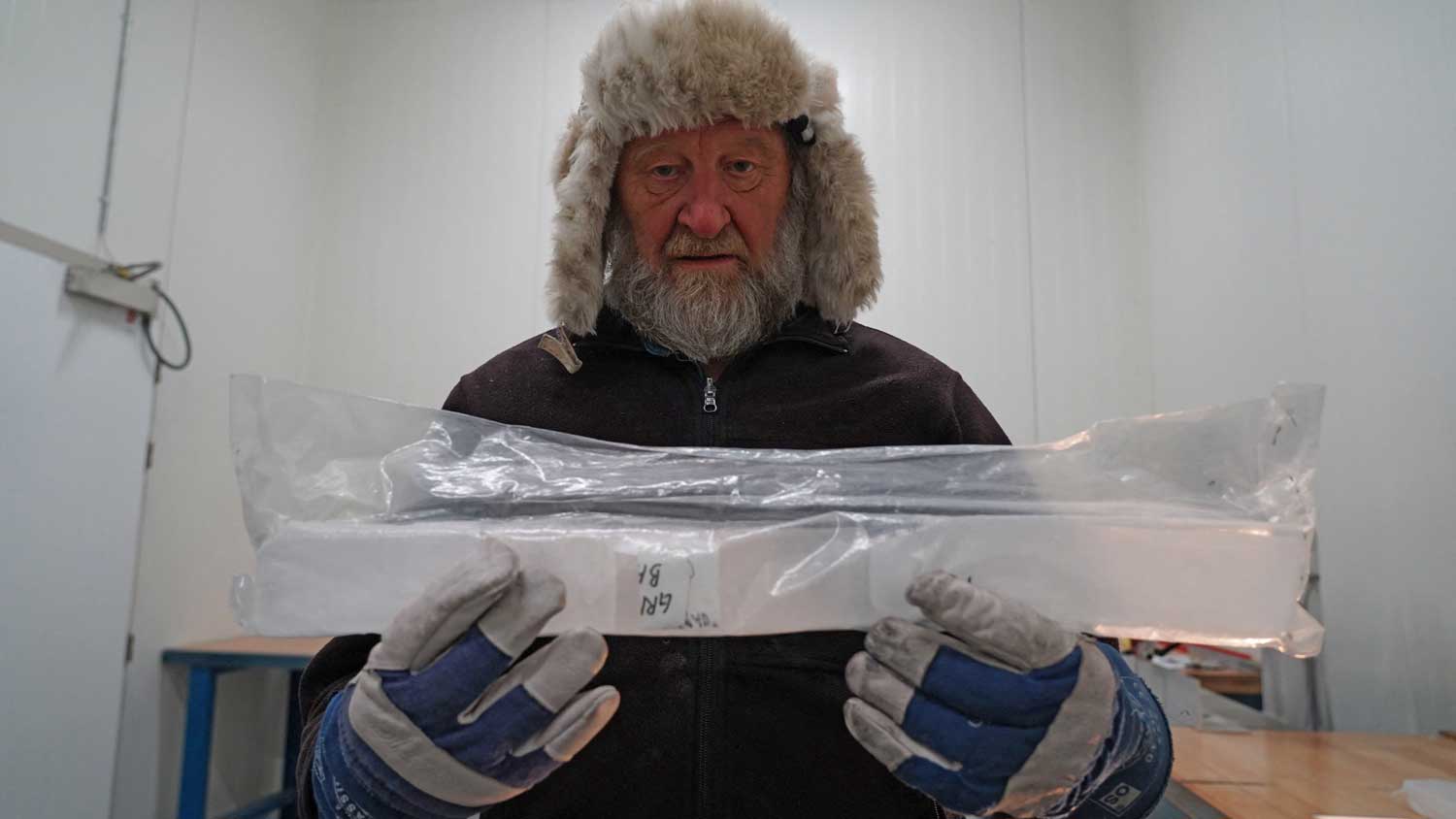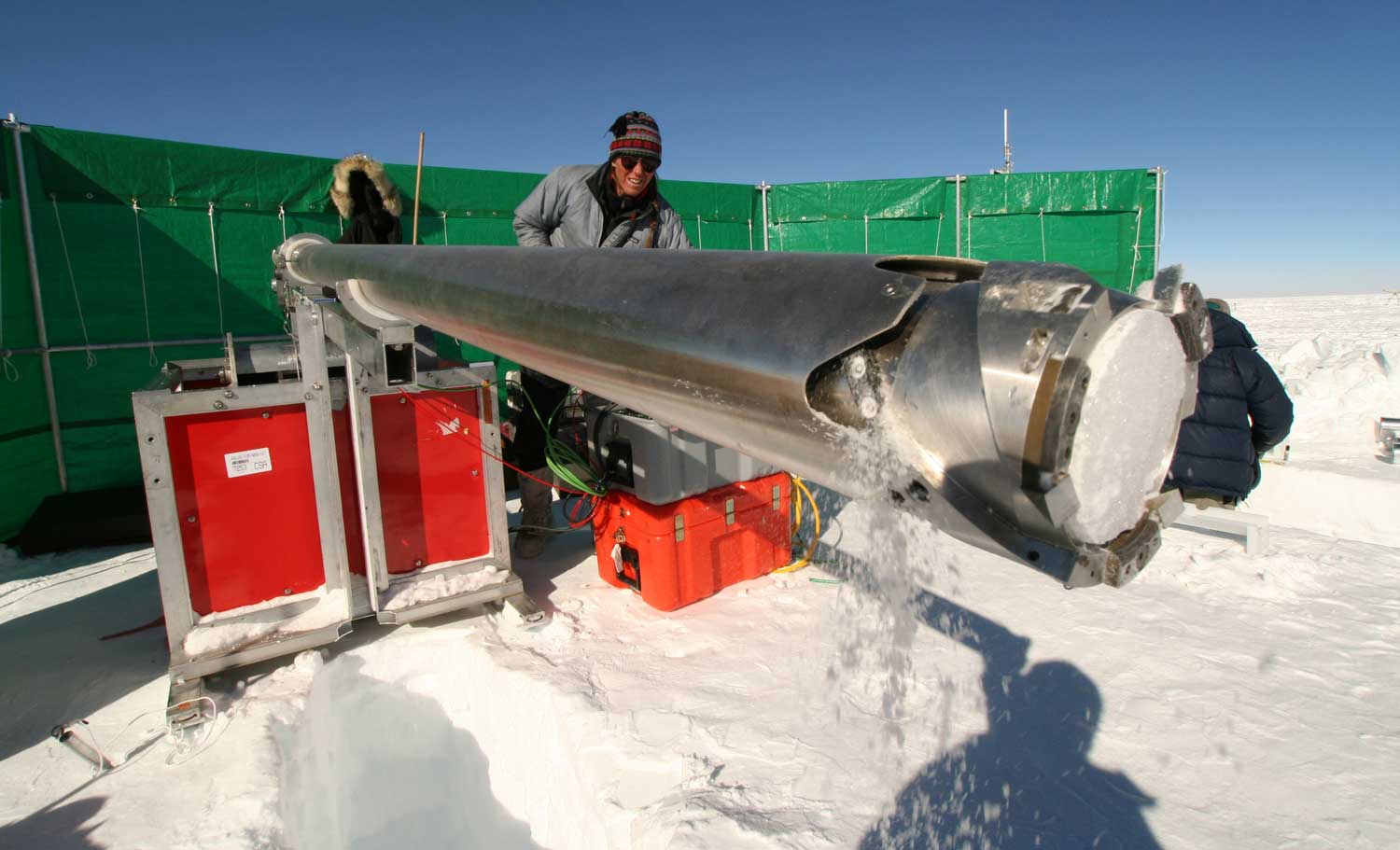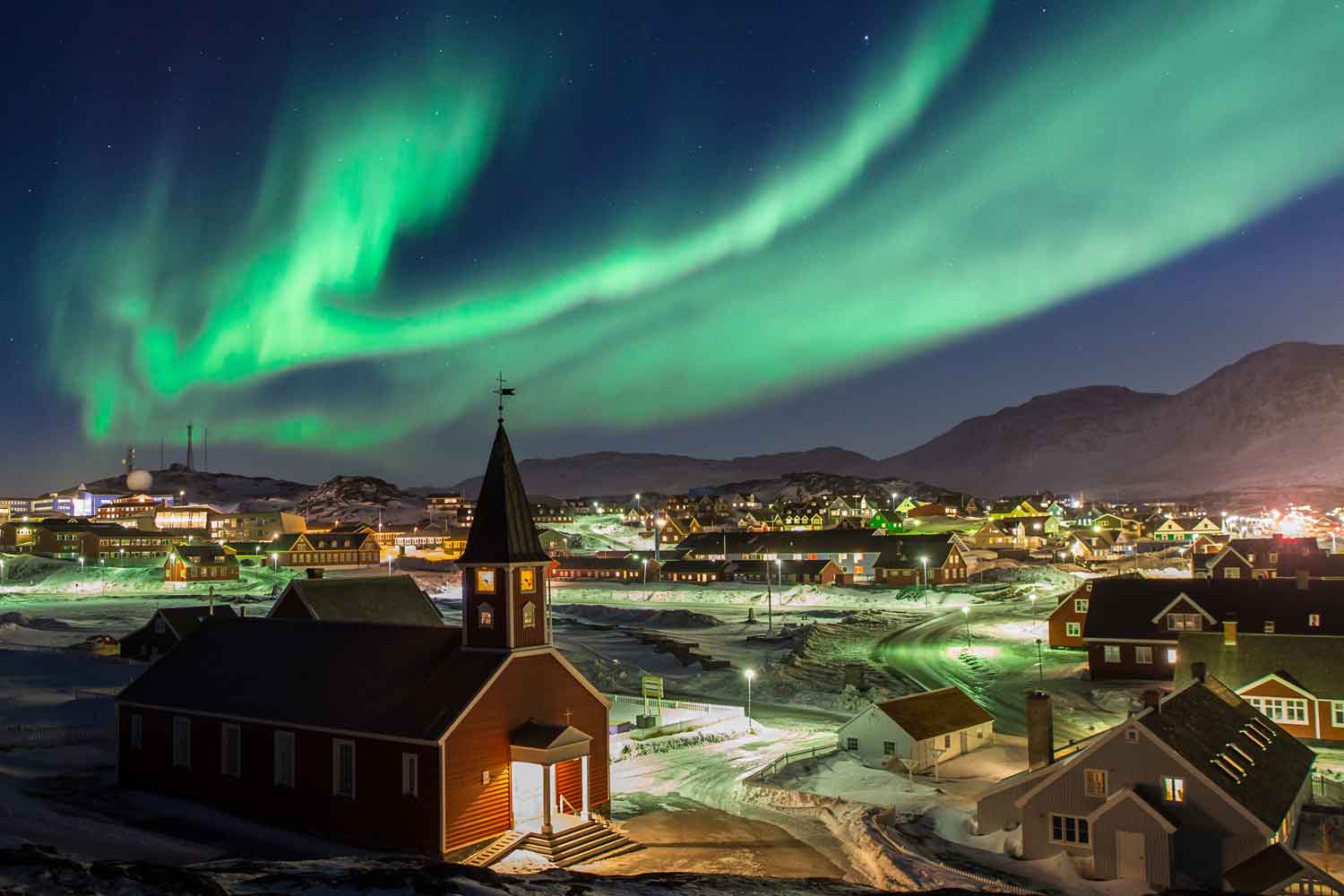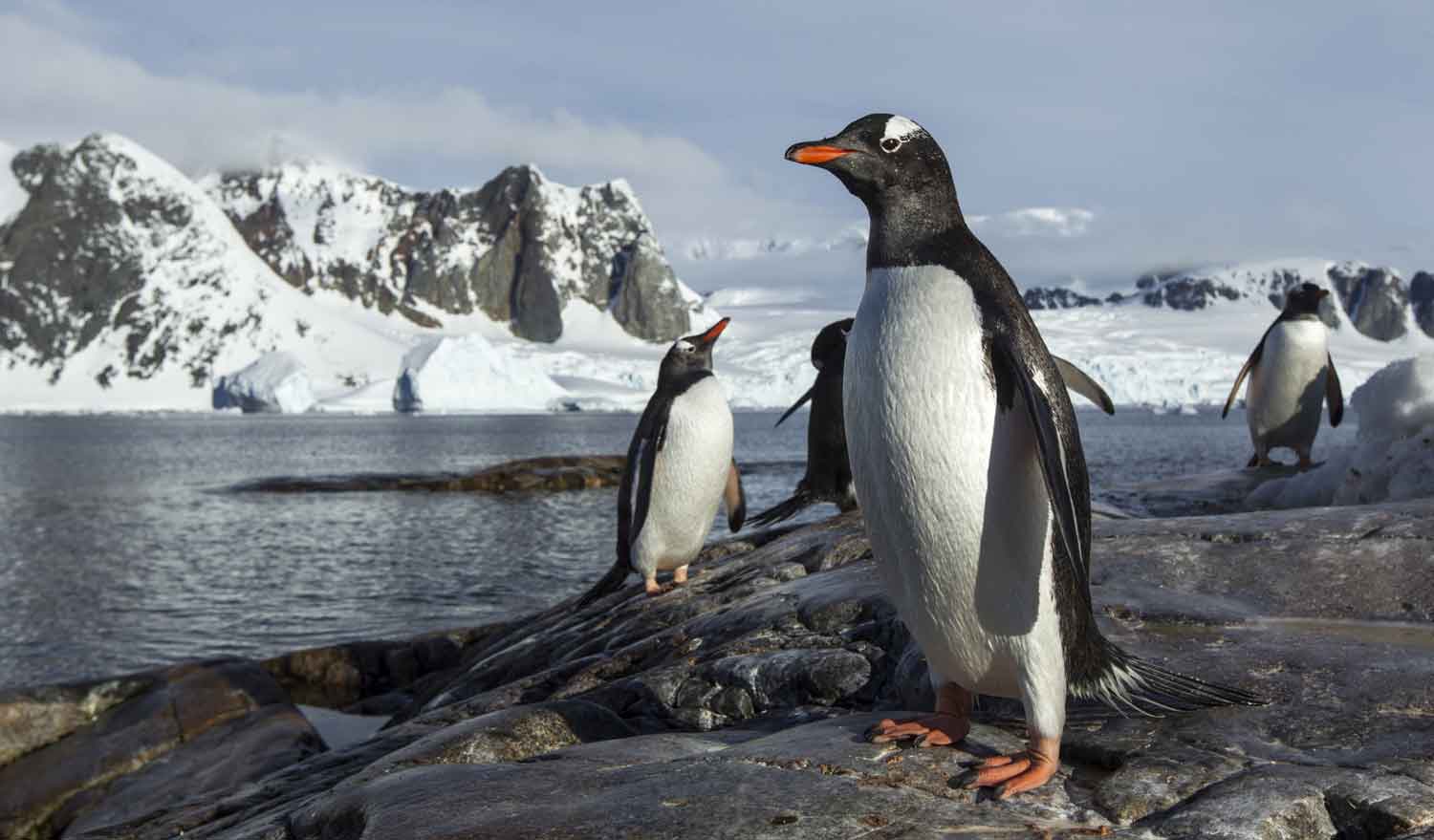Earth’s History Locked in Ancient Ice
Scientists are learning about the history—and the future—of Earth’s atmosphere by studying ancient ice.

James Brooks—AFP/Getty Images
Professor Jorgen Peder Steffensen of the University of Copenhagen holds part of an ice core sample that’s housed at the Ice Core Archive.
It’s one of the most talked-about issues: Human-made pollution is changing Earth’s atmosphere and leading to rapid climate change. But how did the atmosphere change before humans began producing pollution, and what can that tell us about the future of the atmosphere? Scientists believe the key to finding out may be the study of ancient ice.
The Ice Core Archive in Copenhagen, Denmark, is a massive freezer full of ice that originated mostly in Greenland. The ice, which is compressed snow rather than frozen water, dates back as far as 120,000 years ago. It’s a snapshot of a time when the atmosphere was unaffected by human activity.
Air temperatures in Greenland were actually warmer 120,000 years ago than they are today—not because of human activity but because of natural atmospheric conditions. The ice cores can help scientists figure out what the atmosphere was like at that time and how it affected sea levels. Using this information, they hope to be able to figure out how much sea levels will rise due to today’s human activity, according to University of Copenhagen glaciology professor Jorgen Peder Steffensen, who manages the Ice Core Archive.
“With ice cores, we have mapped out how greenhouse gases, carbon dioxide and methane vary over time,” Steffensen told Agence Presse-France. “And we can also see the impact of the burning of fossil fuels in modern times.”



